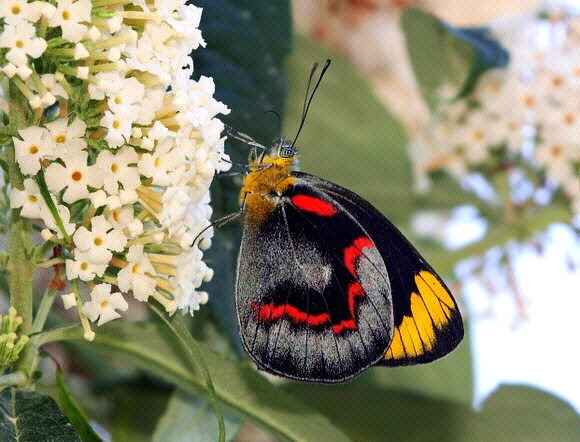
Introduction
There are about 225 described species in the genus Delias. The butterflies are popularly known as Jezebels. Most species are white or greyish on the upperside, with blackish margins and apexes. On the underside they are gaudily patterned in red, yellow, black and white – the colours serving to advertise their unpalateable nature to would-be predators.
Many of the species are highly localised, being endemic to particular islands in south-east Asia, or restricted to certain mountain ranges, e.g. in New Guinea. Others occupy much broader ecological niches, and are more generally distributed.
Delias nigrina is found along the eastern side of the Great Dividing Range in Queensland, New South Wales and Victoria.
Habitats
This species inhabits open forested areas at elevations between sea level and about 1000m.
Lifecycle
The eggs are yellow and laid in clusters on leaves of the foodplants. The caterpillars are dark green with 2 dorsal rows of yellow spots, from which arise long white setae. They feed gregariously on the foliage of mistletoes Amyema, Dendrophthoe and Muellerina ( Loranthaceae ). The pupa is glossy orange with long black curved spines, and long white head horns, giving the impression of a fungal growth. It is attached to the upper surface of a leaf, on the midrib, and attached by the cremaster and a silken girdle.
Adult behaviour
Males can sometimes be found imbibing moisture at the edges of streams. Both sexes very mobile and are more often seen in flight then settled. They tend to pause for a few seconds to nectar at a flowering bush, strongly favouring Lantana, and often visit several plants within a small area before moving elsewhere.
